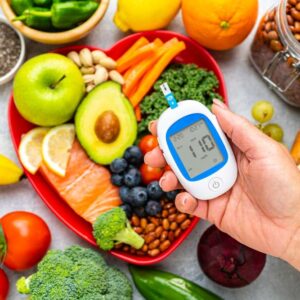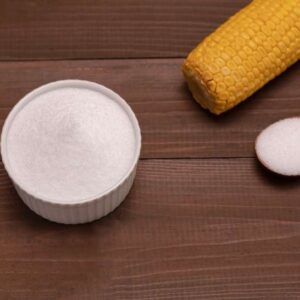
Belly Fat Shocker Will Blow Your Mind
You know the drill. You’ve got to get rid of the belly fat because carrying extra weight around your middle is a one-way ticket to an early grave.
But what if I told you that not all belly fat is created equal?
In fact, new research suggests that one type of belly fat in particular is actually beneficial for your health… if you’re willing to break a sweat.
For years, it’s been drilled into us that belly fat is enemy number one. However, a new study published in the journal Nature Metabolism is challenging everything we thought we knew about those extra inches around our waistline.
It turns out not all belly fat is the same. In fact, obese folks who regularly engage in aerobic exercise have significantly healthier belly fat tissue than their sedentary counterparts.
Yes, you read that right… overweight folks who exercise have healthier fat!
The researchers discovered that exercise triggers biological and structural changes in adipose tissue (science-speak for fat) that can lower your risk for heart disease and metabolic disorders like type 2 diabetes.
The study focused on subcutaneous fat, which sits just beneath your skin. This isn’t the dangerous visceral fat that wraps around your organs. Instead, it’s the jiggly stuff you can pinch with your fingers.
So, what makes this fat “healthier” in exercisers? Let’s break it down:
- Flexibility is key: Regular exercisers had less rigid, less fibrous fat tissue. This allows fat cells to expand and store energy more efficiently. Remember, fat is one of your body’s primary energy sources.
- Less inflammation: The fat tissue in exercisers showed reduced inflammation levels. Chronic inflammation is linked to a host of health problems, so this is a big win.
- Better blood flow: Exercisers’ fat tissue had more blood vessels. This improved circulation can help your body use fat more effectively.
Now, you might be thinking, “That’s great, Doc, but I still want to lose this belly fat!”
Here’s the thing: while this research doesn’t give us a free pass to pack on the pounds, it suggests that being active might be more important than being thin for good metabolic health. But remember, the more you move, the more you will lose.
So, how can you put this knowledge to work for you? Here are some tips:
- Get moving: Aim for at least 150 minutes of moderate or 75 minutes of vigorous aerobic activity each week.
- Mix it up: Try different types of aerobic exercise like brisk walking, swimming, cycling, or dancing to keep things interesting.
- Start small: If you’re new to exercise, begin with short sessions and gradually increase your time and intensity.
- Be consistent: Regular exercise is key. Try to make it a part of your daily routine.
- Don’t obsess over the scale: This study shows that exercise can make your fat healthier even if you don’t lose weight.
So, the next time you look in the mirror and pinch that bit of belly fat, remember that regular exercise could transform it into a tool to lower your risk for heart and metabolic diseases.
It’s time to change your relationship with fat and focus on overall health rather than just the numbers on the scale.
P.S. Still working on losing weight? Supercharge your weight loss in 4 SECONDS!? (Amazing!)
Source:
Ahn, C., Zhang, T., Yang, G., Rode, T., Varshney, P., Ghayur, S. J., Chugh, O. K., Jiang, H., & Horowitz, J. F. (2024). Years of endurance exercise training remodel abdominal subcutaneous adipose tissue in adults with overweight or obesity. Nature Metabolism, 6(9), 1819-1836.
Written By Dr. Scott Olson, ND
Nearly 25 years ago, failed mainstream medical treatments left Dr. Olson in constant pain – and his health in ruins. And that’s when he did something REVOLUTIONARY. He began his career in medicine – and dedicated his life to uncovering the true, underlying causes of disease.
Through his innovative medical practices in Tennessee and Colorado, Dr. Olson has helped cure countless seniors from across America of arthritis… heart disease… diabetes… and even cancer. All without risky prescription drugs or painful surgeries.
View More Free Articles
Stop Obsessing Over Diet Trends
Can we stop with the endless diet debates already? Every other week there’s a new headline shouting about which diet is best for weight loss, heart health, or diabetes. Paleo, keto, low-carb, high-protein… it’s exhausting. And now, a new meta-analysis is out comparing the Mediterranean diet, the DASH diet, and something called AHEI (that’s “Alternative...
A New Reason to Ditch Processed Junk
If you’ve ever walked the inside aisles of your local grocery store and thought, “This is all just junk,” your instincts were spot on. A new study published in the journal Thorax just added another red flag to the list of dangers linked to ultra-processed food—a 41 percent higher risk of lung cancer. That’s right....
When Being Winded on Stairs Is Serious (And When It Isn’t)
I had an athlete visit me recently because he experienced shortness of breath while climbing stairs. He is in great shape, so he was worried about what it might mean. “Doc,” he said, “I run five miles three times a week. Why am I huffing and puffing after two flights of stairs?” His concern is...
Study EXPOSES Hidden Danger Lurking in Your Car
We think of our homes and cars as safe havens. But according to a startling new study, they may be flooding your lungs with microscopic plastic particles—every single day. Researchers in France recently found that adults inhale an average of 68,000 microplastic particles daily from indoor air alone. To put that in perspective, that’s about...
Mailbag: Is Modern Food Making You Snore?
“What can cause snoring, and is there a way to correct this issue?” —Seeking Silence Hi Seeking, Snoring happens when the soft tissues in your throat relax and vibrate as air passes through during sleep. While several factors can cause snoring—from sleep position to nasal congestion—I want to share one trigger that might surprise you....
Simple Food Swap SLASHES Dementia Risk 28%
Let’s be honest… who would jump at the chance to cut their dementia risk by 28 percent. And no, you don’t need to run marathons, survive on broccoli, or learn to play the zither (whatever that is) to make it happen. All it takes is one easy swap—something that’s probably already in your refrigerator. Researchers...
This SMART Floss Exposes Hidden Health Danger
Scientists have created dental floss that doesn’t just clean between your teeth—it also tracks your stress while you’re flossing. Now, I know what you’re thinking… “Great—now even flossing is going to stress me out by telling me how stressed I am.” But this fascinating new tool from Tufts University could be a game-changer for understanding...
Is This "Safe" Sweetener Damaging Your Brain?
The headlines are alarming… “Popular Sugar Substitute Linked to Brain Cell Damage” and “Erythritol Could Damage Critical Brain Barrier” are just two of the dozens I’ve spotted recently. But before you toss every sugar-free product in your pantry, let’s take a closer look at what this study actually shows—and what it doesn’t. The latest research...
This Summer Threat Could SPIKE Your Blood Sugar
Picture this… It’s another scorching hot summer day. You crank up the air conditioning while watching the weather forecast, which predicts yet another “record-breaking” heat wave. It’s starting to feel like just another miserably uncomfortable summer. But what you might not realize is that—if you have diabetes—those rising temps could do far more damage to...
Move Over Yogurt—5 Foods That Pack MORE Probiotics
Let’s talk about your gut. The microbiome is the collection of trillions of bacteria and other tiny organisms that live in and on your body—especially in your gut—and help keep you healthy. I’ve written often about how vital it is to maintain a healthy microbiome. And you might have dutifully added yogurt to your shopping...









